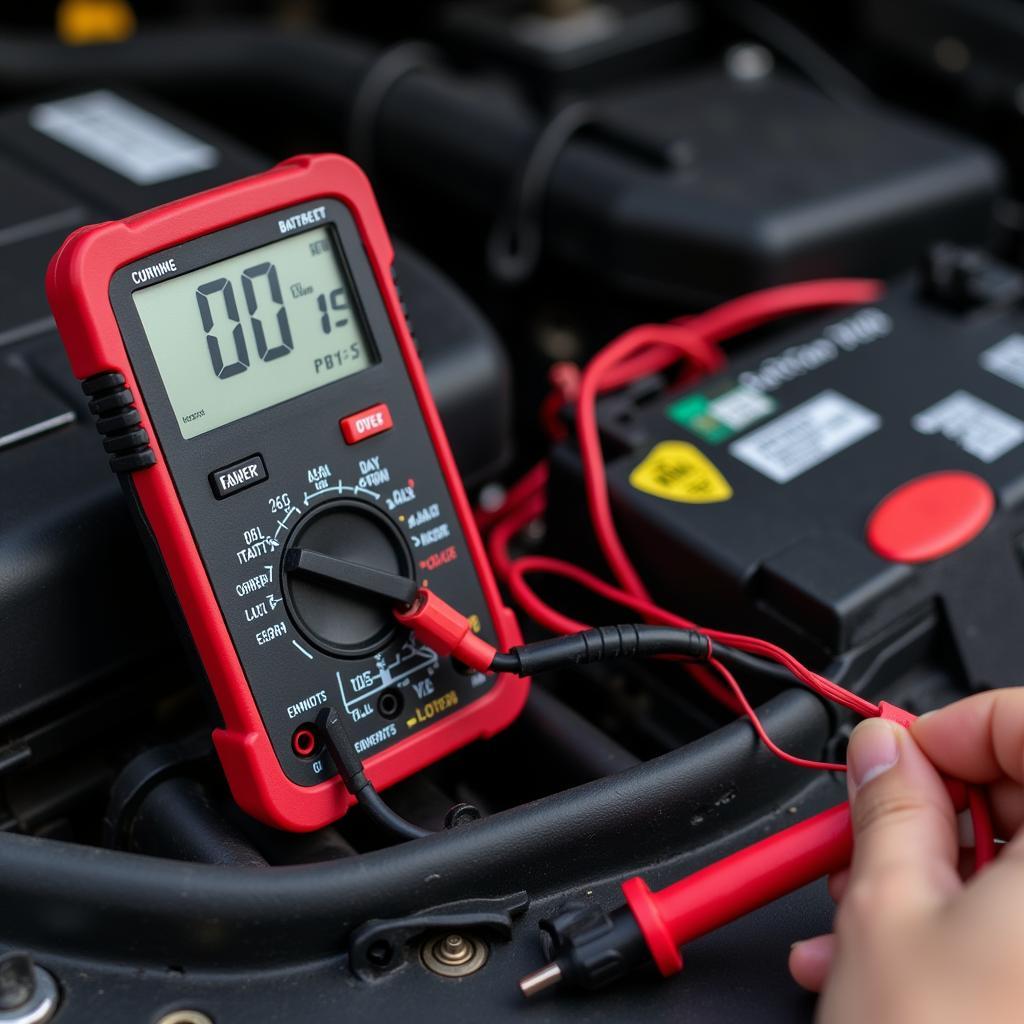Seeing a warning light illuminate on your dashboard can be unsettling, especially when it concerns your brakes. The 2016 Hyundai Tucson is no exception. If your brake warning light has turned on, don’t panic. This article will guide you through the common causes and offer practical solutions to address this issue.
The brake warning light in your 2016 Hyundai Tucson is part of the vehicle’s safety system, designed to alert you to potential braking system issues. While it can signal a serious problem, it can also indicate something as simple as an engaged parking brake.
Common Causes of a 2016 Hyundai Tucson Brake Warning Light
There are several reasons why the brake warning light might come on in your 2016 Hyundai Tucson. Here are some of the most common culprits:
- Low Brake Fluid: The most common cause is low brake fluid, often due to worn brake pads or a leak in the braking system. Brake fluid is the lifeblood of your braking system, and when it’s low, your brakes won’t function as effectively.
- Worn Brake Pads: Brake pads have wear indicators that make a distinctive squealing sound when they are worn thin. If you ignore this sound and continue driving, the brake warning light might come on.
- Faulty Brake Light Switch: The brake light switch is responsible for activating your brake lights when you press the brake pedal. A faulty switch can also trigger the brake warning light.
- ABS Issue: While less common, a problem with your Anti-lock Braking System (ABS) can also trigger the brake warning light. This is often accompanied by an ABS warning light.
- Parking Brake Engaged: It sounds obvious, but sometimes the simplest explanation is the most likely. Make sure your parking brake is fully released.
 Hyundai Tucson Brake Fluid Reservoir
Hyundai Tucson Brake Fluid Reservoir
Troubleshooting the Brake Warning Light
Before heading to a mechanic, you can try a few things to diagnose the issue:
- Check Your Parking Brake: Ensure the parking brake is fully disengaged.
- Inspect Brake Fluid Level: Carefully open the brake fluid reservoir under the hood. The location and appearance of the reservoir can vary between car models; consult your owner’s manual if you’re unsure. If the fluid is below the “Min” line, it needs to be topped up.
- Listen for Unusual Noises: Pay attention to any unusual sounds coming from your brakes, such as grinding or squealing when applying the brakes.
- Check Your Dashboard: Look for other warning lights, particularly the ABS light.
When to Seek Professional Help
If the brake warning light remains illuminated after checking these things, or if you notice any of the following, it’s crucial to seek professional help immediately:
- Leaking Brake Fluid: Brake fluid is typically clear or slightly yellow. If you notice a puddle of fluid under your car that is slippery to the touch, it could be a brake fluid leak.
- Soft or Spongy Brake Pedal: If your brake pedal feels soft or spongy, or if it goes closer to the floor than usual, you might have a serious brake issue.
- Burning Smell While Driving: A burning smell coming from your wheels, especially after prolonged braking, could indicate overheated brakes or other brake system problems.
- Pulling to One Side: If your vehicle pulls to one side when braking, this indicates uneven brake pressure and requires immediate attention.
 Worn Brake Pads on Hyundai Tucson
Worn Brake Pads on Hyundai Tucson
The Importance of Timely Maintenance
Regular brake inspections and maintenance are essential for your safety and the longevity of your 2016 Hyundai Tucson.
“Neglecting brake maintenance is like ignoring a ticking time bomb,” says master mechanic John Smith. “Regular checks and timely repairs can prevent dangerous situations and costly repairs down the line.”
Remote Diagnostics and Programming: The Future of Car Repair
Advancements in automotive technology now allow for remote diagnostics and programming, providing a convenient and efficient way to address certain car issues.
hyundai tucson 2016 brake warning light
For example, suppose the brake warning light in your 2016 Hyundai Tucson is triggered by a faulty brake light switch. In that case, a qualified technician can often diagnose and resolve this issue remotely using specialized software. This eliminates the need for a trip to the mechanic and saves you both time and money.
hyundai tucson 2016 brake fluid warning light
Conclusion
The brake warning light in your 2016 Hyundai Tucson is a crucial safety feature that should never be ignored. While some causes are minor and easily addressed, others can signal serious problems requiring immediate professional attention. Remember, ensuring your brakes are in optimal working condition is paramount to your safety and the safety of others on the road.

